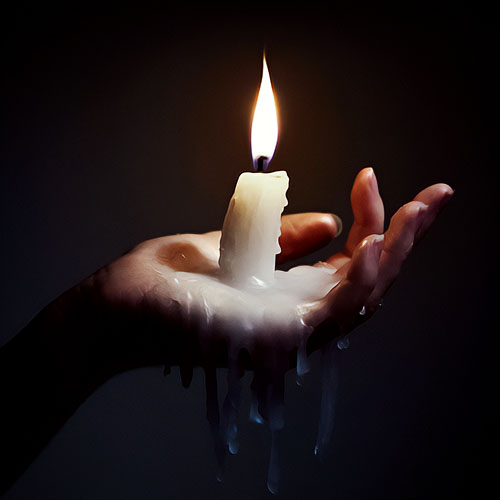The hardest part of sex work often isn’t the time spent with clients or fans. Navigating the bullshit of stigma and the hierarchical structures it upholds can be a huge component of the work.
 Welcome to the Whorearchy
Welcome to the Whorearchy
If you aren’t a sex worker, chances are you haven’t spent much time contemplating the ins-and-out of the industry; if you are, it’s likely that you’ve already encountered the Whorearchy firsthand.
Privilege shapes almost every facet of a sex worker’s experience, dictating where they start, the opportunities they receive, how much money they make, and the challenges they encounter along the way. The more privilege one holds, the more access one has to more desirable tiers within the industrial hierarchy — often referred to as the “whorearchy”. One’s age, race, gender, class, ability, immigration status, and proximity to Eurocentric beauty standards translate into more than just dollar signs for workers; privilege can also mean being able to say no to undesirable clients, having less frequent or less intimate contact with them, and even things as fundamental as being able to work without the constant fear of arrest.
Sex work is like any other industry in that some positions are inherently more desirable than others — but it’s also unlike “vanilla” work in ways less obvious to outsiders. The industry occupies a unique intersection of intrigue and ostracization, where the sex worker is both desired and stigmatized.

Sex workers are branded as “dirty” by the same people who patronize and appropriate them. They’re chastised by the housewives who attend pole fitness classes on weekends but would never set foot in a club. The same politicians who themselves patronize sex workers are quick to criminalize the industry in order to maintain their wholesome image.
“The parallel here is people with privileged identities, chosen or otherwise, using aesthetics associated with a marginalized group for their benefit while contributing to our oppression or, at the least, being complicit in it.” says sex worker (andeducator )Raquel Savage in “Unpack Your Whorephobia“. “If Sex Workers’ existences weren’t criminalized all of this would be less offensive. Unfortunately, that’s not the case.”
Outsiders know that the stigma associated with sex work has real world consequences. Getting too close means they too might be subjected to the harassment and discrimination workers often face. These attitudes lay at the foundation of the whorearchy, shaping the public policies that police their work, deciding which forms of the work are acceptable enough to be “tolerated” and which ones could land you in jail.
Not all workers face the same amount of risk — those who work legally face often greater challenges than those who do not. Forms of sex work are typically thought to exist in one of two categories, direct providers who offer “full service sex work” experiences (“FSSW”) and indirect providers, who do not.
Direct providers, who may provide services through an agency, work independently or work with a “manager” or pimp, are divided into categories of street-based and indoor work. Street-based workers assume the greatest amount of risk in sex work due to their proximity to law enforcement and unscreened clients, while indoor full-service workers (escorts, brothel workers) frequently have greater access to screening methods and more control over their work environment.
Indirect providers offer services that don’t meet the threshold of “full service”. Some sell the fantasy of sex (strippers, cam-girls, fetish models, etc.) while others make a living off denying their clients’ sexual gratification entirely (pro-dommes). These workers may or may not have the ability to screen their clients ahead of time, but they’re less frequently subject to the threat of arrest and violence. Other workers bounce back and forth between direct and indirect services, occasionally offering “extras” to VIP clients. Workers of color face additional adversity as they navigate the racist policies often present in the indirect provider space. Many strip clubs limit the amount of non-white dancers they hire and camsites frequently deprioritize their placement — in adult film, black cis-female performers can expect to make 50%-75% of a white cis-female’s rate.
While much of the stigma associated with sex work comes from outside the community, there’s plenty of hierarchical crap to be found within it. Some workers look down on others for offering services they don’t, for the way they choose to do their work, or even for performing work they don’t enjoy. Although there are a variety of reasons why someone may choose to hold opinions that marginalize other members of their community, in some cases, it’s an expression of a worker’s own internalized “whorephobia” or an effort to distance oneself from the stigma and marginalization experienced by other sex workers. “Many at the bottom of the pyramid don’t engage with the sex worker community because they’re too stigmatised even amongst sex workers.” writes sex worker and activist Gracey. “Some people, they may have no friends or family after being rejected by them due to being a sex worker, and they rely on other sex workers for support. […] To then have the very same people judge you or criticise how you sex work is hurtful.”
As with all forms of sex work, there’s a lot of gray area. People who occupy the most privileged tiers of the whorearchy often enjoy the luxury of distancing themselves from their status as sex workers entirely. Sugar babies may get paid for their time regardless of whether they’ve agreed to have sex with a patron, “gold diggers” may prioritize a partner’s financial contributions over a mutually shared romantic connection.
Though the majority of sex workers share feelings of solidarity with other community members, regardless of the tier they occupy, the very existence of this form of inter-group hostility feels like a knife through the heart — harmful not only to the workers targeted by it but to the community as a whole. Sex worker solidarity isn’t just an ideal, it’s a necessity in the fight against issues that impact our shared experience. While risk is unequally distributed, sex worker movements, whether contained to the specifics of the industry or connected to broader struggles for bodily autonomy and economic freedom, must seek universal liberation; an injury to one is an injury to all. We’re all fighting for the right to exist, and no one deserves support more than those who have to fight harder.
For a series of technical reasons you care nothing about, we’ll put the link for the infographic from Monique Duggan down here. We also ran across another whorearchy pyramid floating around Reddit, but we could not find an attribution for it. Still, we wanted to show this alternative, as this one portends to equate self-identified “status” along the scale. … Most importantly, perhaps only from our point of view would be the fact that neither of these scales even includes “Porn Star” in the hierarchy — although we can tell you from direct experience that everyone puts themselves above porn stars, and porn stars put themselves above everyone else. It’s a thing. We should ask Renee to look into it someday. You can ask Renee too when you find a contact through her site.




















It’s possible that the entire sex-related businesses spectrum, will be fully legalized and unionized within the next five years or so. It’s not that the rich 1%ers running our Society, will stop being sanctimonious hypocrites about soliciting sex services, it’s that only by TAXING all of these mostly-discreet sex workers (Sworkers?) full incomes, can North America start to pay off our national debt, which is running into THRILLIONS of dollars!!